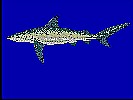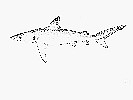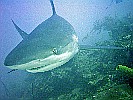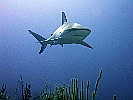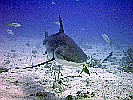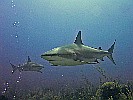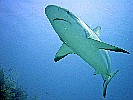Carcharhinus perezii
(Poey, 1876)
Caribbean reef shark
Classification: Elasmobranchii Carcharhiniformes Carcharhinidae
Reference of the original description
Enumeratio piscium cubensium (Parte III). Anales de la Sociedad Española de Historia Natural, 5, 373–404
Enumeratio piscium cubensium (Parte III). Anales de la Sociedad Española de Historia Natural, 5, 373–404
Image of the original description
.jpg)
Carcharhinus perezii (Poey, 1876)
.jpg)
Carcharhinus perezii (Poey, 1876)
Synonyms / new combinations and misspellings
Carcharhinus aff. perezi, Carcharhinus cf. perezi, Carcharhinus cf. perezii, Carcharhinus perezi, Carcharhinus springeri, Eulamia springeri, Platypodon perezii
Carcharhinus aff. perezi, Carcharhinus cf. perezi, Carcharhinus cf. perezii, Carcharhinus perezi, Carcharhinus springeri, Eulamia springeri, Platypodon perezii
Description :
Citation: Carcharhinus perezii (Poey, 1876): In: Database of modern sharks, rays and chimaeras, www.shark-references.com, World Wide Web electronic publication, Version 04/2024
Please send your images of "Carcharhinus perezii" to info@shark-references.com
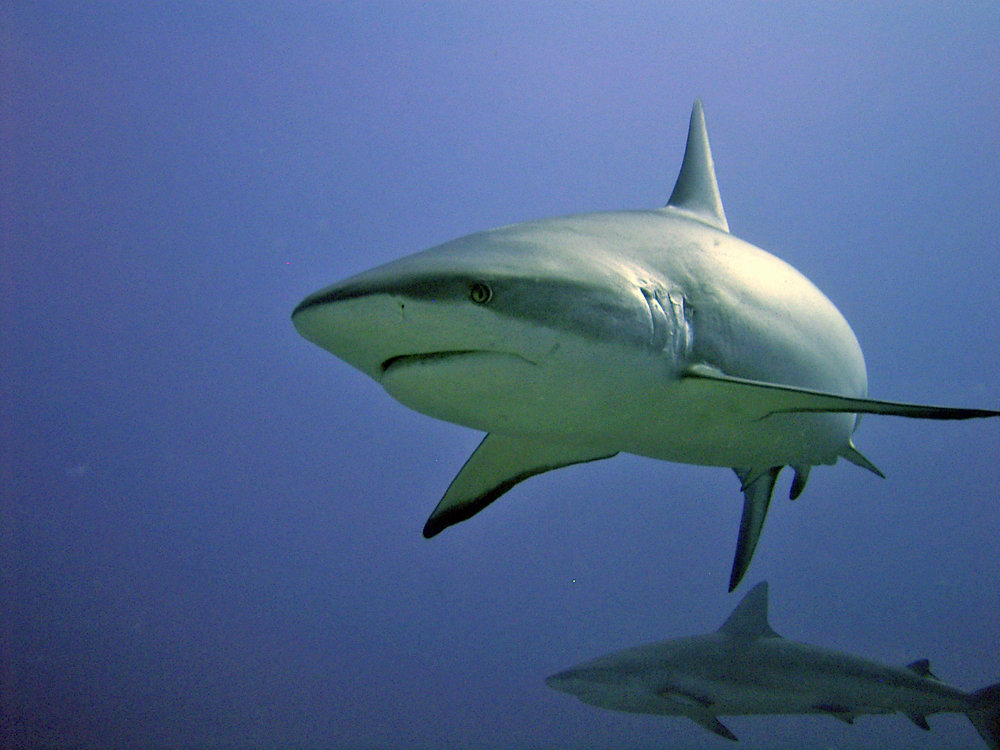
Carcharhinus perezii, Kuba, Jardines de la Reina, Mai 2007 © Joachim Seidel, Germany

Carcharhinus perezii, Kuba, Jardines de la Reina, Mai 2007 © Joachim Seidel, Germany
Common names
 Cabeza dura,
Cabeza dura,  Cazón,
Cazón,  Cazón de arrecife,
Cazón de arrecife,  Tiburón,
Tiburón,  Tiburón coralino,
Tiburón coralino,  Tiburón tollo,
Tiburón tollo,  Tollo,
Tollo,  Requin de récif,
Requin de récif,  Caribbean reef shark,
Caribbean reef shark,  Reef shark,
Reef shark,  Shark,
Shark,  Cação-coralino
Cação-coralino
 Cabeza dura,
Cabeza dura,  Cazón,
Cazón,  Cazón de arrecife,
Cazón de arrecife,  Tiburón,
Tiburón,  Tiburón coralino,
Tiburón coralino,  Tiburón tollo,
Tiburón tollo,  Tollo,
Tollo,  Requin de récif,
Requin de récif,  Caribbean reef shark,
Caribbean reef shark,  Reef shark,
Reef shark,  Shark,
Shark,  Cação-coralino
Cação-coralino
Short Description
Diagnose after Garrick, 1982 [908]: Large sharks, up to 2.95 m long, with a low interdorsal ridge; tips of paired fins, anal fin, and lower lobe of caudal dusky; snout moderately short and bluntly rounded; internarial width 1.0-1.1 in preoral length; origin of first dorsal fin over or slightly anterior to inner pectoral corner; apex of first dorsal acute to sharply rounded; origin of second dorsal about over or slightly in front of anal fin origin; height of second dorsal 2.9-3.3 % TL and 1.1-1.5 in length of its rear tip; dental formula usually 13-1-13/12-1-12 but may be 12 or 13-1 or 2-12 or 13/11 or 12-1-11 or 12 ; upper teeth moderately narrow, oblique, strongly notched laterally, concave to weakly notched medially, with slightly coarser serrations basally; lower teeth erect, serrated; no obvious discrete series of enlarged hyomandibular pores alongside corner of mouth; precaudal centra 103-108; caudal centra 102-107; total centra 208-213; diplospondyly begins from pelvic origin to halfway along pelvic base; diplospondylous centra regular in length; penultimate monospondylous centrum 1.3-1.4 times wider than long. This Caribbean species is remarkably similar to galapagensis, not only in external form but also in vertebral numbers. To a lesser extent it resembles obseurus, plumbeus, and altimus with which it shares, along with galapagensis, the common features of an interdorsal ridge, no conspicuous color pattern other than dusky fin tips, and a first dorsal fin origin which is over or anterior to the pectoral inner comer. However, perezii differs from all of these in the shape of its upper teeth (narrow, and strongly notched laterally rather than broad and concave laterally) and, in most cases, in its lesser number of teeth (usually 13-1-13/12-1-12) whereas the other species mostly have 14 or even 15 upper teeth and from 13 to 15 lower teeth on each side).
Diagnose after Garrick, 1982 [908]: Large sharks, up to 2.95 m long, with a low interdorsal ridge; tips of paired fins, anal fin, and lower lobe of caudal dusky; snout moderately short and bluntly rounded; internarial width 1.0-1.1 in preoral length; origin of first dorsal fin over or slightly anterior to inner pectoral corner; apex of first dorsal acute to sharply rounded; origin of second dorsal about over or slightly in front of anal fin origin; height of second dorsal 2.9-3.3 % TL and 1.1-1.5 in length of its rear tip; dental formula usually 13-1-13/12-1-12 but may be 12 or 13-1 or 2-12 or 13/11 or 12-1-11 or 12 ; upper teeth moderately narrow, oblique, strongly notched laterally, concave to weakly notched medially, with slightly coarser serrations basally; lower teeth erect, serrated; no obvious discrete series of enlarged hyomandibular pores alongside corner of mouth; precaudal centra 103-108; caudal centra 102-107; total centra 208-213; diplospondyly begins from pelvic origin to halfway along pelvic base; diplospondylous centra regular in length; penultimate monospondylous centrum 1.3-1.4 times wider than long. This Caribbean species is remarkably similar to galapagensis, not only in external form but also in vertebral numbers. To a lesser extent it resembles obseurus, plumbeus, and altimus with which it shares, along with galapagensis, the common features of an interdorsal ridge, no conspicuous color pattern other than dusky fin tips, and a first dorsal fin origin which is over or anterior to the pectoral inner comer. However, perezii differs from all of these in the shape of its upper teeth (narrow, and strongly notched laterally rather than broad and concave laterally) and, in most cases, in its lesser number of teeth (usually 13-1-13/12-1-12) whereas the other species mostly have 14 or even 15 upper teeth and from 13 to 15 lower teeth on each side).
Distribution
Western Atlantic: Florida, USA to southern Brazil, including the northern Gulf of Mexico and the Antilles. Source: www.gbif.org
Western Atlantic: Florida, USA to southern Brazil, including the northern Gulf of Mexico and the Antilles. Source: www.gbif.org
Human uses
fisheries: commercial
fisheries: commercial
Biology
Distinct pairing with embrace [17086]. Viviparous, placental [733]. Is capable of lying motionless on the bottom like the nurse and lemon sharks [1992]. Cleaned by Elacatinus randalli at Fernando de Noronha Archipelago, western south Alantic [20243].
Distinct pairing with embrace [17086]. Viviparous, placental [733]. Is capable of lying motionless on the bottom like the nurse and lemon sharks [1992]. Cleaned by Elacatinus randalli at Fernando de Noronha Archipelago, western south Alantic [20243].
Size / Weight / Age
300 cm TL (male/unsexed; (Ref. 9710)); 295 cm TL (female); max. published weight: 69.9 kg (Ref. 40637)
300 cm TL (male/unsexed; (Ref. 9710)); 295 cm TL (female); max. published weight: 69.9 kg (Ref. 40637)
Remarks
shark-references Species-ID=810;
shark-references Species-ID=810;
Parasites (arranged by Jürgen Pollerspöck)
Hirudinea
Hirudinea








